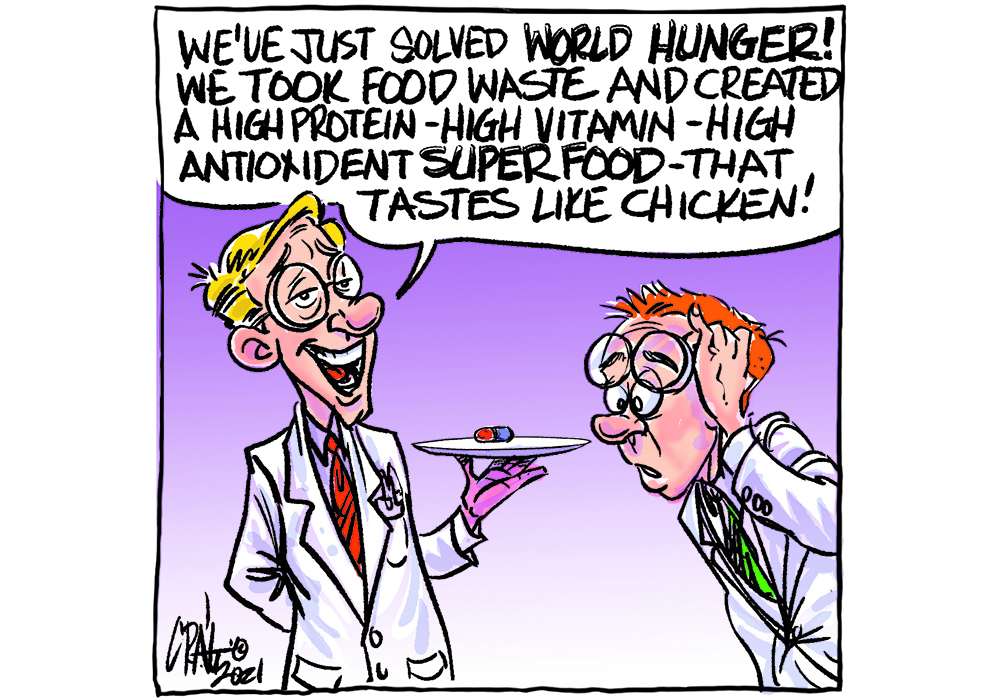Food waste an issue for people, planet

The amount of food wasted in Canada grows along with citizens’ expectations that cheap, abundant food will be available at grocery stores 12 hours per day, seven days per week.
Canadians can and do buy nearly anything they desire when poverty isn’t a factor. Unfortunately for the planet, they throw away more than 10 percent of it.
Our food culture, which we share with the United States, European Union, Australia and parts of Asia, is based on 7.7 billion acres of arable farmland on the planet and its ability to grow inexpensive food.
The most productive of this land is relatively energy intensive to operate. It relies on modern technology to remain viable, coupled with low-priced global shipping, just-in-time transportation logistics and often low-wage labour.
A relatively cheap food supply underpins our societies, helping to prevent social unrest and political instability. Efficient food production is at the core.
The downside of all that efficiency is that food is deemed disposable in wealthier regions of the world.
In Canada, about six percent of identified food waste occurs behind farm gates. Some is lost at harvest, often due to weather, and to spoilage or damage in storage and transportation. Narrow farm margins are tied to minimal on-farm waste and mitigated by livestock feeding and other options.
On the horticulture side, waste occurs in the form of non-conforming fruits and vegetables, but there too there are newer markets in processing and livestock feeding. The rest occurs in the processing and grocery realms and in consumers’ homes.
The United Nations Food and Agriculture Organization estimates that one billion tonnes of food are wasted annually on the planet. Much of it is not recycled or reprocessed, is lost to landfills and meets methane-releasing, non-productive ends.
The energy used to grow or otherwise create food — fertilizer, farm fuel, transportation, processing and refrigeration — is lost along with the money that purchased the goods.
Internationally, our world is rapidly adding to the middle class that is responsible for the greatest food losses.
Domestically, researchers’ recent estimates of this waste in Canada suggest that 43 percent is due to processing, five or six percent in distribution, 12 percent at retail, 13 or 14 percent in commercial cooking and 20 percent in households.
The Simpson Centre at the University of Calgary estimates that 58 percent of Canadian food is discarded each year, piling up to 35.5 million tonnes. The direct financial loss is worth about $50 billion and indirect losses are pegged at more than $100 billion. That doesn’t include lost opportunities to export products or process them into animal feeds.
Landfills in Canada release methane from food and other biological wastes, and this represents eight percent of the nation’s greenhouse gas emissions, according to estimates.
Changes in public behaviour are needed if we are to solve this issue. Higher food prices may encourage change but that fails those who can’t afford either food or food waste.
Greater public awareness of the problem is needed, along with more education on best practices. A carrot rather than a stick approach is preferable to policies that penalize.
Part of the solution may lie in amendments to best-before dates on many foods, which consumers mistakenly tend to consider as the equivalent of expiry.
Governments also have a role to support investments in tools and pathways that minimize food waste.
Karen Briere, Bruce Dyck, Barb Glen and Mike Raine collaborate in the writing of Western Producer editorials.
Source: producer.com

